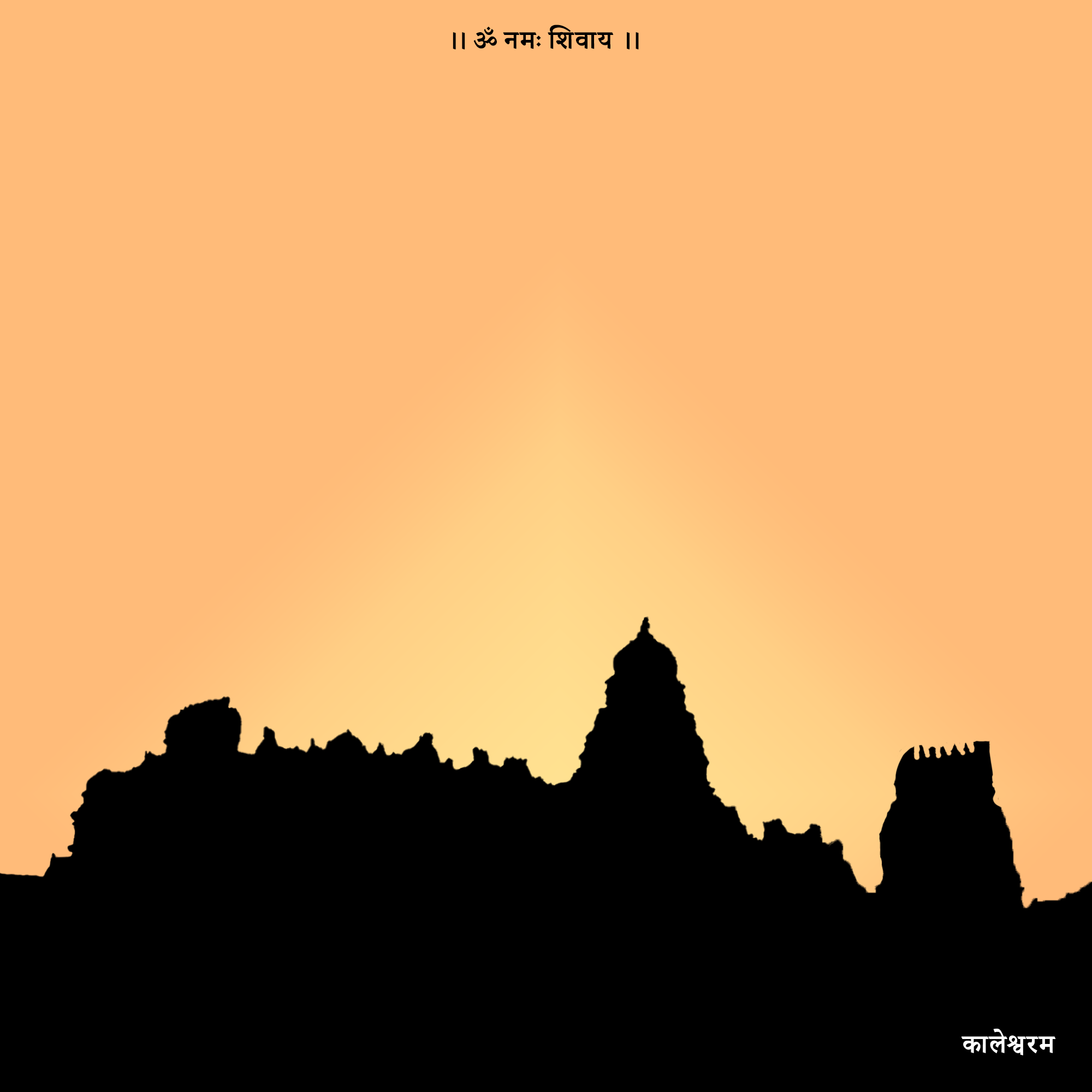A notable Hindu temple devoted to Lord Shiva is the Kaleshwaram Temple, also called the Kaleshwara Mukteswara Swamy Temple. It is situated in the Indian state of Telangana, in the town of Kaleshwaram. Due to its location near the meeting point of the Godavari River and its tributaries, the temple is a revered and important spiritual location. The Kaleshwaram Temple is described in detail in the following facts and information
Kaleshwaram Temple Location
The Kaleshwaram Temple is located in the Telangana district of Bhupalpally in the town of Kaleshwaram. The Godavari River and its tributaries, Pranahita and Saraswathi, meet close to the shrine.
Lord Shiva, also known as Kaleshwara Mukteswara Swamy, is the primary deity of the Kaleshwaram Temple. A lingam, which stands for the divine manifestation of Lord Shiva, is kept in the temple.
River Confluence, The Kaleshwaram Temple’s location at the meeting point of the Godavari, Pranahita, and Saraswathi rivers makes it special. Given how sacred this convergence is, the temple is frequently referred to as the “Dakshina Triveni Sangamam.”
Table of Contents
Architecture and Historical Importance
The temple is significant both historically and mythologically, and it is linked to a number of Hindu myths and legends. It is thought that Lord Shiva himself visited this location to bless his followers.
Intricate carvings, sculptures, and a soaring gopuram (entry tower) distinguish the South Indian architectural style of the Kaleshwaram Temple. There are numerous shrines honoring various gods around the temple complex.
The Kaleshwaram Temple is a significant destination for Lord Shiva worshipers, drawing tourists from Telangana and surrounding regions. Mahashivaratri is observed with fervor as part of the many festivals and celebrations held at the temple.
The Skanda Purana claims that River Godavari atoned for Bhagwan Siva, who materialized as Mukteeswara Swamy on the bank of the river. Due to living things seeking redemption through holy dips in the Godavari River and darshans of the primary deity Mukteeswara Swamy, an imbalance arose in the Universe.
The God of Death, Yama, discovered that he had less work because fewer dead people were visiting Yama Loka in order to find salvation. In penance, he begged Bhagwan Siva to preserve the life cycle (birth, death, and rebirth). He was ordered to erect Siva Linga (Kaleshwara Linga) next to Mukteeswara Linga by the delighted Bhagwan Siva. It is thought that anyone who prays at this temple will find salvation and be freed from the cycle of birth. Thus, the temple that Mukteeswara and Kaleshwara invoked. The only temple in Garbha Griha with two Lingas is this one.
Every 12 years, when Jupiter reaches the sign of Leo (Simha Rashi), a significant religious celebration known as the Godavari Pushkaralu takes place. The Kaleshwaram Temple becomes the center of the festivities during this time, as devotees take a sacred dip in the Godavari River.
One of the eight historic Bhagwan Shiva temples that are located nearly on the same longitude is Kaleshwaram Temple. The following is a list of Bhagwan Shiva temples that are nearly in the same longitude:
- Kedarnath – Kedarnath Temple (30.7352° N, 79.0669)
- Kaleshwaram – Kaleshwara Mukteeshwara swamy Temple (18.8110, 79.9067)
- Srikalahasti – Srikalahasti Temple (13.749802, 79.698410)
- Kanchipuram – Ekambareswarar Temple (12.847604, 79.699798)
- Thiruvanaikaval – Jambukeswara Temple (10.853383, 78.705455)
- Tiruvannamalai – Annamalaiyar Temple (12.231942, 79.067694)
- Chidambaram – Nataraja Temple (11.399596, 79.693559)
- Rameswaram – Ramanathaswamy Temple (9.2881, 79.3174)
Visitation
Both devotees and visitors can go to the Kaleshwaram Temple to observe the god and partake in ceremonies. Before making travel arrangements, it is advised to confirm the temple’s operating hours and regulations.
The area surrounding Kaleshwaram is renowned for its irrigation projects. The position of the temple at the meeting point of two rivers is crucial for irrigation and farming methods.
The confluence of the rivers and Kaleshwaram’s spiritual atmosphere make it a destination for pilgrimage as well as a location for spiritual introspection and connection with nature.
